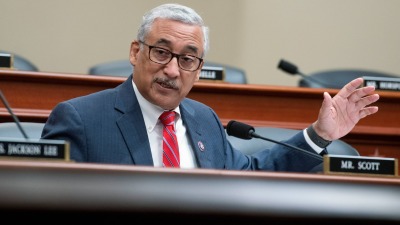
Legislative Updates – April 1, 2023
DOL Labor Nominee Julie Su
The Senate HELP Committee is expected to hold Julie Su’s nomination hearing on Thursday, April 20.
Josie Javier Rodriguez Advances
On last Tuesday, the Senate HELP Committee voted in favor of Jose Javier Rodriguez to be ETA Assistant Secretary.
Fiscal Stalemate – The Debt Ceiling and FY 24
Congress has entered a two-week recess without much headway on the debt ceiling or FY 24 budget negotiations. The federal government began using extraordinary measures to pay its bills upon reaching the $31.4 trillion borrowing limit in mid-January, and it is expected that Congress will need to act on the debt ceiling as early as June, though some expect the debt ceiling might not be reached until August.
President Biden and Speaker McCarthy (R-CA) have not met or spoken on the debt ceiling since their initial meeting on February 1. Speaker McCarthy has been seeking to negotiate and wishes to extract concessions to limit government spending, while President Biden continues to maintain that lifting the debt ceiling is not negotiable. President Biden has also maintained that any discussion on the FY 24 budget and appropriations process should be separate from the debt ceiling. 
On Tuesday, Speaker McCarthy released a letter to President Biden in which he called for another meeting to discuss fiscal matters. McCarthy said he aims to achieve trillions in savings and economic growth, and listed the following priority areas: reducing non-defense spending, reclaiming unspent COVID funds, strengthening work requirements, energy policies, and border security.
McCarthy separately said the ideas he is suggesting would generate more than $4 trillion in savings over ten years. President Biden’s FY 24 budget proposal, released several weeks ago, would reduce the deficit by nearly $3 trillion over the same time period. It would take nearly $15 trillion to balance the budget over a decade, a degree of savings that appears not feasible for Speaker McCarthy to put forward.
President Biden suggested Congress quickly address the debt ceiling with no conditions, reiterated his stance that any budget conversation be separate from action on the debt ceiling, and stated that he would meet with McCarthy to discuss the FY 24 budget only after House Republicans released their budget.
Speaker McCarthy asked for the White House to reach out to his team by the end of the week to set a date for their next meeting, and President Biden responded that he hoped House Republicans would present their budget by the end of the week.
House Republicans had been expected to release their budget by April 15, the nonbinding deadline for Congress to adopt a budget. However, House Budget Committee Chair Jodey Arrington (R-TX) said it could take months for House Republicans to produce a budget and that he would be disappointed if the House did not pass a budget resolution before the October 1 start of FY 24. Speaker McCarthy has pledged to set FY 24 discretionary spending at the FY 22 levels.
House Republicans are considering measures to advocate for in order to raise the debt ceiling. Speaker McCarthy has signaled that House Republicans are getting closer to agreement on these policies, and that they may vote on a bill if President Biden doesn’t start negotiations. They are also considering a short-term debt ceiling extension of several months to align with the September 30 end of the Fiscal Year, likely paired with some key priority measures and spending cuts. This would link the debt ceiling negotiations to FY 24 spending, which President Biden and Democrats oppose.
One difficulty is the narrow margin in the House. Speaker McCarthy, who leads a 222-213 majority, must keep the various factions of his party fairly unified on any debt ceiling bill, as he’ll need 218 votes to pass legislation.
The Republican Study Committee, comprised of about 170 conservatives, plans to release its own budget plan the week of April 17. That blueprint is expected to set nondefense discretionary spending below FY 22 levels, zero out numerous programs, institute work requirements—perhaps on SNAP, TANF, and/or Medicaid, and roll back parts of the ACA including its Medicaid expansion.
House and Senate committees held number of FY 24 budget hearings over the last several weeks. While HHS Secretary Xavier Becerra and others provided testimony to several committees, hearings on the Department of Labor budget proposal and Department of Education budget proposal were not held prior to recess.
The Senate may not adopt a budget resolution this year. Senate Budget Chair Sheldon Whitehouse (D-RI) has previously said that he would wait to see the President’s budget proposal and the House’s budget resolution before deciding whether to write a budget resolution, which is not required and can be fraught with political complications. The Senate may instead adopt a deeming resolution.
Meanwhile, House Appropriations Ranking Member Rosa DeLauro (D-CT) released responses from cabinet secretaries and other senior leaders here which highlight how spending cuts would impact federal programs across the government.
The Department of Labor responded that, “a 22 percent reduction would prevent about 750,000 job seekers from accessing services and training through ETA-funded programming. A return to FY 2022 enacted levels would result in about 125,000 fewer job seekers receiving services and training from the workforce development system.”
DOL also noted that, “a 22 percent reduction would lead to over 100,000 fewer workers being employed through Registered Apprenticeships. A return to FY 2022 enacted levels would lead to 76,000 fewer workers being employed through Registered Apprenticeships.”
The House and Senate return on Monday, April 17.
House Committee on Ways & Means, Work & Welfare Subcommittee Hearing, “Welfare is Broken: Restoring Work Requirements to Lift Americans Out of Poverty”
Our memo is available here. Download the memo to utilize all hyperlinks.
House Committee on Education & the Workforce, Subcommittee on Higher Education & Workforce Development Hearing, “Breaking the System: Examining the Implications of Biden’s Student Loan Policies for Students and Taxpayers”
Our memo is available here. Download the memo to utilize all hyperlinks.
House Committee on Education & the Workforce
In addition to the hearing mentioned above, the Committee held a hearing on “Unleashing America’s Opportunities for Hiring and Employment” on Tuesday.
The Subcommittee on Higher Education and Workforce Development held a hearing on “Diversity of Though: Protecting Free Speech on College Campuses” on Wednesday.
 Ranking Member Bobby Scott (D-VA) announced the Jobs to Compete Act, which expands Pell Grant eligibility to adults in high-quality, short-term training programs. A fact sheet is here and section-by-section is here.
Ranking Member Bobby Scott (D-VA) announced the Jobs to Compete Act, which expands Pell Grant eligibility to adults in high-quality, short-term training programs. A fact sheet is here and section-by-section is here.
Rep. Scott also announced plans to reintroduce the Lowering Obstacles to Achievement Now (LOAN) Act. The bill would double the Pell Grant, improve the PSLF program, make loans less expensive, and lower interest rates. The bill text is here, fact sheet is here, and title-by-title is here.
Priorities of Chair Virginia Foxx (R-NC) include WIOA, HEA, and short-term Pell.
Not a member? Join today.
Members of the American Workforce Coalition gain access to exclusive content and events, including:
- Monthly Jobs Reports
- Legislative Analyses
- Peer-to-Peer Collaboration
- Access to Experts & Innovators
Already a member? Login